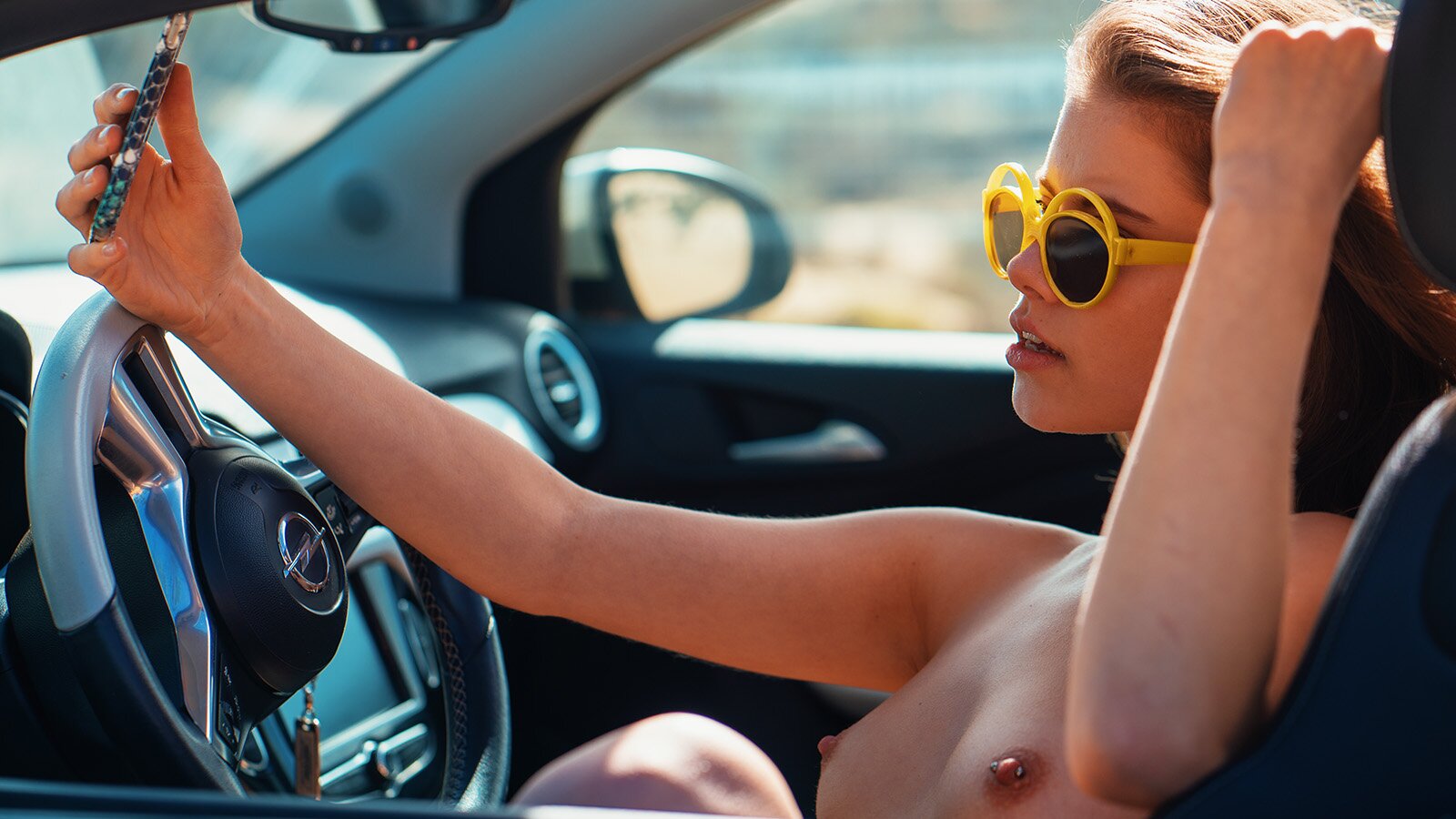Today's smartphone cameras are capable of capturing professional images even under difficult lighting conditions. This is a huge evolution. Just remember how difficult it was to capture a cheesy sunset on film. It never looked the way you remembered having seen it in real life.
And it's hard to imagine life without this tiny device.
Smartphone photography has changed so many things. Every moment in life gets caught on camera nowadays. Not by everyone, but by the vast majority. There are no video clips of my childhood. They simply don't exist, because my parents didn't have a camcorder. This is different now. We all have a video camera in the pocket.
And I believe, I know, what made this tiny camera so popular. It's not the lens, but besides its permanent availability, it's the well-thought-out software that makes you look flattering. The key?
Flattering wide-angle lens
A tiny wide-angle lens build into the smartphone which has a focal length equivalent of 26mm to 33mm depending on your phone model. What's so special about it?
A long focal length will flatten out the feature of a face, for example. It brings foreground and background closer together and therefore makes your face appear rounder. But it's not a one-way street. These same (opposite) effects will make you look thinner when being photographed with a wide-angle lens (from a distance, not close-up).
Wide-angle lenses, as their name implies, have a wide field of view, so everything in the corners of the frame will be a bit stretched out. This means, if you photograph a human, the wide-angle will help to make the person look more slim. You have probably seen people (or should I say influencers) being photographed with one foot on the tip toe and the leg slightly stretched forward. This typical instagram pose gives the impression of having long legs.
Don't get fooled by the wide-angle! If you know from which height (e.g. a lower level) and which angle of the camera to shoot, you can use the wide-angle to your advantage. I remember having seen amazing photos of girls on instagram that looked boring and very average in real life. So, I learned this the hard way, years ago.

You might laugh about the wide-angle, because of course, there's more.
Unreal filters
There are these filters that you can apply to modify the look instantly. No skills are needed any longer to alter the shape of the face. Some photo apps do this for you. You even see it in the preview while taking the photo: blown up lips, whitened eye balls, thicker eye brows, narrower face shapes, ... the list goes on.
And not only in photographs, stills, the same goes for video. And for live video broadcasts, too. I recently watched a model that I had just photographed who had broadcasted herself live on instagram. And she looked so different from how I remembered her. At first, I though it was the makeup. But then, I realized it was a live filter.
It's obvious when there's a butterfly dancing on a girl's nose during the broadcast. But not so obvious when only the eyes get enlarged by 20%.
Is this good or bad? Who am I to judge! It certainly is a trend. And to be honest, I'm not a fan.
Perception and belief
Visuals have a strong impact on our brain. Photos subtly change what and how we remember. It happens with every photograph. So, it does happen with modified photos as well. We recall ourselves in a way we never looked. This can't be good.
Personally, my work involves creating images and telling stories that never happened. But it is clearly marked as entertainment and fantasy. I am not a documentary photographer. And many smartphone photographers and social media enthusiasts believe what they see. They believe in a world of altered imagery. Odd, isn't it?

Lazy brains
How much of my life do I want remembered by my brain only? For me, it is not difficult to answer this question. When I witness a live concert, I won't pull out my smartphone to record a video of the show. I want to feel the moment and I can only do it when I let myself go without any distractions or activities.
Others need to document every moment of their lives and they basically photograph to show others how special their life is. And by taking such photographs they totally forget to live the life that they are trying to document. This is the strangest part of it all.
To be fair, this is something that existed before smartphone photography already. When people took photos of themselves in front of every statue and fountain on a holiday trip.
And when people are hunting for the perfect instagram shot, they are neither listening nor paying attention to the complex and beautiful details that make up the moment. And those memories won't come back when watching the video or photograph later. It will be a visual documentation, but without evoking a feeling.
I often feel misunderstood when speaking about this with younger people. They tell me, they experienced the moment and they captured it at the same time. So my feeling is, they are not as sensitive as I am. Paying close attention to my surroundings helped me a lot in becoming a visual artist. It probably is key for everyone who wants to become an artist.
My advice
Please think about leaving your phone in the pocket (or at home) from time to time. While smartphone photography has become amazing in quality, it changed the way we perceive and remember things we better had experienced in real life.
They say, the dose makes the poison. Strange when a photographer says this about photography, but I believe, this saying goes for smartphone photography, too.
